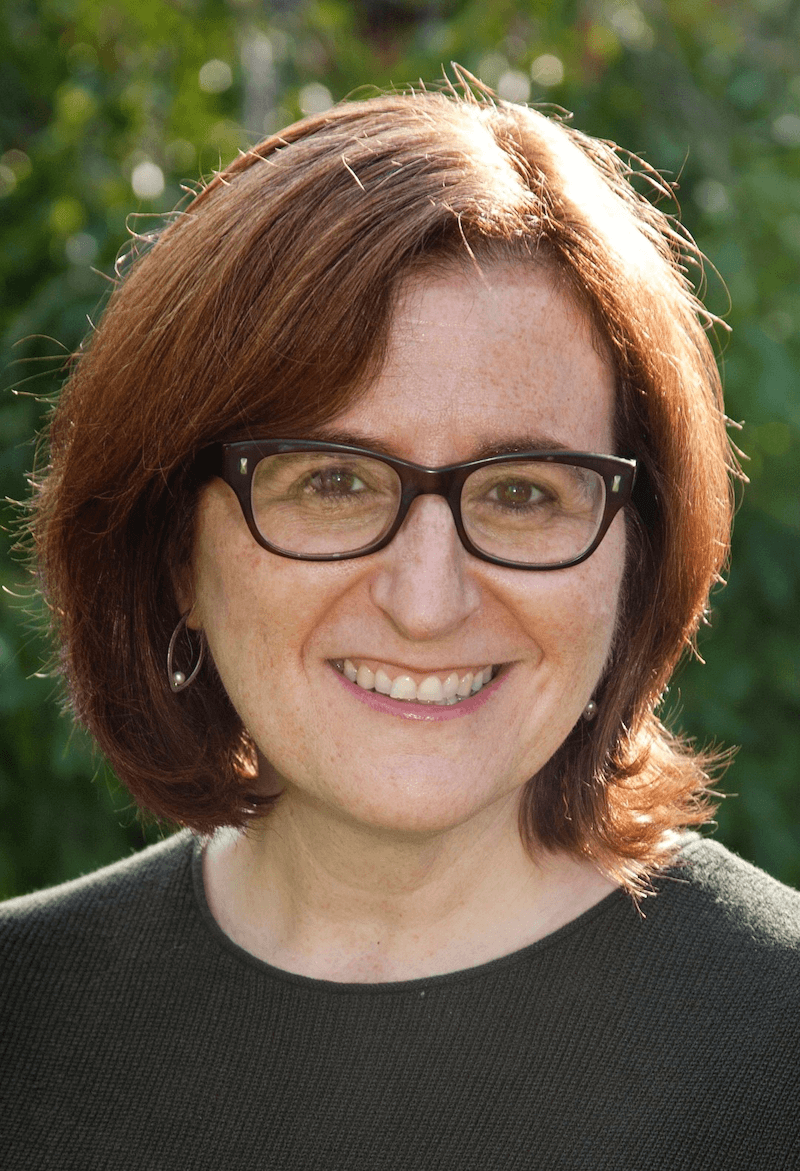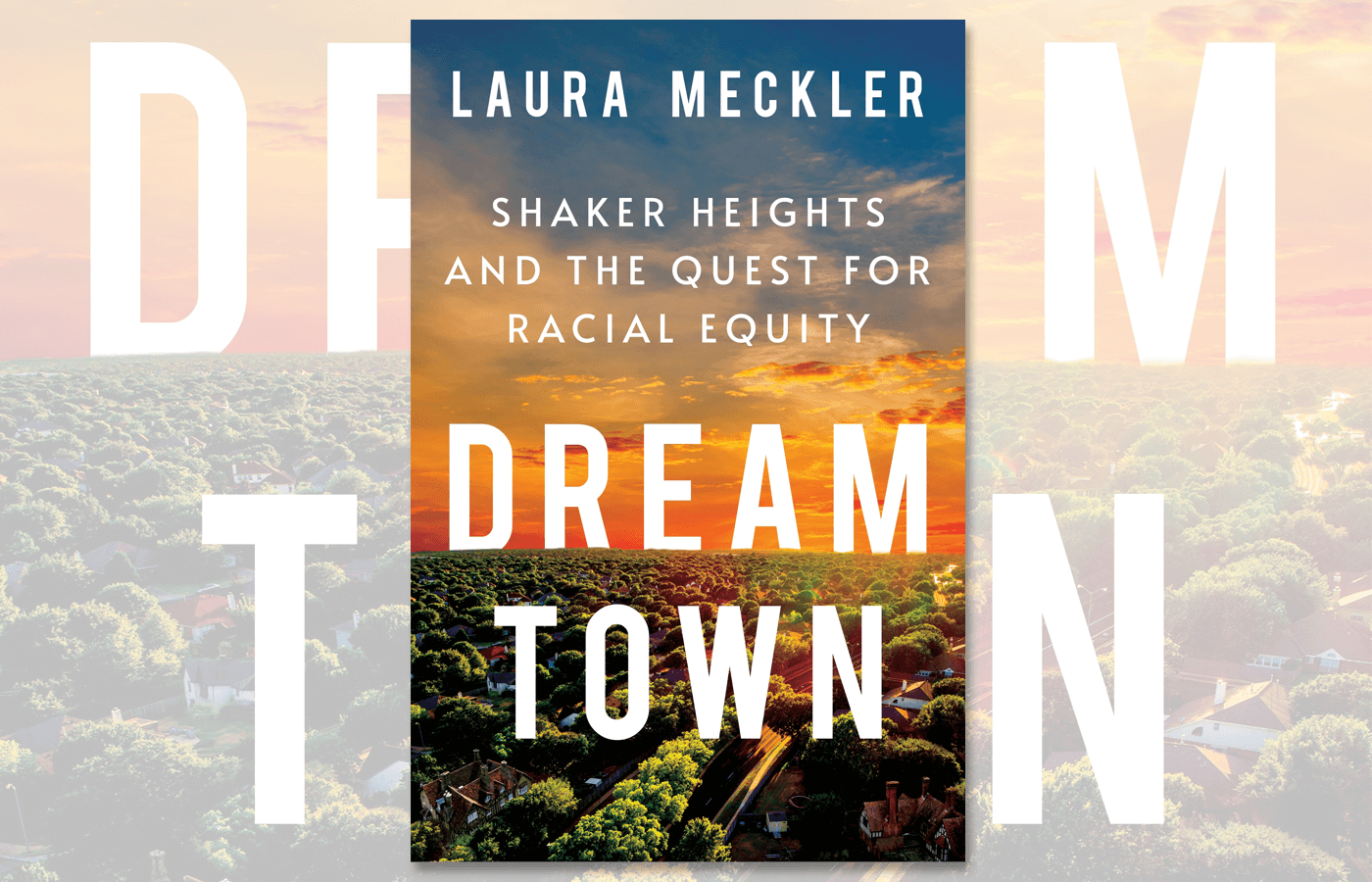Dream Town: Shaker Heights and the Quest for Racial Equity
by Laura Meckler
Macmillan, 2023, $31.99; 400 pages.
As reviewed by David Steiner
Laura Meckler has written a deeply engaging account of Shaker Heights, Ohio, a Cleveland suburb and planned community founded in 1909, whose current population totals some 29,000—roughly one-third Black and half white. Embracing some 70 years of history, Meckler’s early chapters focus on the struggles to keep the town desegregated—an often-fraught process in which Black inhabitants of Shaker found themselves criticized by other Blacks for trying to limit the number of new Black residents.
The latter portion of the book shifts to K–12 education. Here the focus is on school administrators who have continually tried to allay the fears of affluent white parents keen to preserve tracking and of Black parents rightly convinced that tracking locks most of their children into a less-effective education. An underlying theme of the book is the steady impoverishment of the Black population, creating increasing housing and educational challenges. The final chapter describes recent initiatives in the long quest to reduce Shaker’s opportunity and achievement gaps. This effort focuses on providing universal pre-K education and on eliminating tracking once and for all.
If this summary strikes the reader as rather anodyne, I recommend reading Meckler’s book as the perfect antidote. It is anything but dull. What otherwise might have been a linear history of town and school policies is broken up by stories and vignettes of individual characters whose perspectives and actions will long stay in the reader’s mind. For instance, Meckler’s account of the origins of the community of Shaker Heights is a true page-turner, with the colorful brothers O. P. and M. J. Van Sweringen at its core. But it is the later portraits of those engaged in schooling that are the most arresting—none more so than Meckler’s disturbing account of a Black student, Olivia McDowell, and her interactions with Jody Podl, her white English teacher. The entire episode is immensely revealing about the racial politics in which American public schools find themselves enmeshed—a politics characterized by distrust, miscommunication, and prejudice.
The memorable portraits in the book are many: they include a hubristic superintendent (his initial hopes of becoming U.S. secretary of education chastened by years in Shaker) and a pair of distinguished academics—John Ogbu and Ronald Ferguson—drawing contradictory lessons from their research on Shaker’s schools. We also encounter a diverse assortment of parents whose hopes and frustrations and sometimes headstrong actions are vividly and sympathetically portrayed.

The basic outlines of the education story will be familiar to many readers. The intersection of poverty and race in Shaker, as elsewhere in the United States, created (and continues to create) vast differences in educational achievement between Black and white students. In Shaker, disparate educational outcomes were already a painful issue in the 1990s. Data show that 95 percent of Black students were streamed into the lowest education tracks. The 50 percent of Black students who took the SAT scored an average of 813 out of a possible 1600. For the 90 percent of white students who took the same test, the average was 1118.
Meanwhile, Black families in Shaker were becoming poorer. Comparing 1990 to 2020, the proportion of Black Shaker families living in poverty nearly tripled to 14.7 percent, while the suburb’s white poverty rate in 2020 stood at 3.8 percent, a tiny increase over the earlier decades. As Shaker’s Black families became more impoverished, their children did more poorly in school than their earlier Black peers, while also taking less demanding coursework.
Meckler, who is herself from Shaker Heights, does a very fair job of rehearsing the debates (in Shaker and around the country) about what produced the discrepancies in educational achievement. She invokes background conditions at home, lack of access to quality pre–K, longer busing routes, teachers who didn’t believe their Black students could excel (a self-fulfilling prophecy), peer pressure, and inferior educational facilities for Black students. Meckler references Ferguson’s findings on the impact of poverty and parental income on Black students’ academic performance while not shying away from citing the more controversial explanations that Ogbu offered, which focused on Black family culture and a purported lack of effort on the part of Black students (a finding that other researchers have disputed).
The author takes us—in telling and sometimes granular detail—into the endless efforts of superintendents, principals, teachers, and families to close the educational achievement gap without alienating the affluent white families (and the few affluent Black families) who would otherwise leave Shaker, as some did. The district instituted double busing—white students into majority Black schools and vice versa—to try to keep schools integrated; it tried to recruit more Black teachers; and it created a variety of support programs to assist Black students. Meckler also chronicles the constant efforts of Black mothers to organize and to pressure the district to improve their children’s education.
Inevitably, in a book of this scope, there are some frustrating gaps. Given the importance of neighborhoods and their demographics, a map of Shaker Heights would have been very helpful. Data such as the SAT scores cited above are given without dates, leaving the reader to infer approximately when they were recorded. The interweaving of policy and personality, character portraits, and stories leads at times to a choppy reading experience. While the book references events as recent as the summer of 2023, there is no summary of exactly where the school district stands today—either in terms of its academic trajectory or in any comparison of overall performance or subgroup performance to similar subgroups nationwide. There are periodic references to the fact that for all its challenges, Shaker Heights has at times recorded better academic results for its Black students than the nation manages as a whole—but once again, there is no systematic reporting of those results through time, nor of whether such scores are routinely higher or just periodically so.
While a reviewer shouldn’t require that an author write a different book, it may be helpful to point out what is not attempted here. Meckler is an excellent journalist and is careful not to take on the role of political scientist, educational theorist, or philosopher. Thus, this is not a book for readers expecting grand arguments or conclusions about the best ways to improve education. There is no attempt to adjudicate between different theories or policies of education reform (although there is clearly sympathy for constructivist teaching). And Meckler is careful to avoid sweeping judgments about identity politics or human nature.
What we get instead—to our immense benefit—is a wealth of historical detail, a finely written portrait of the realities in the field, a sensitive treatment of key protagonists, and an acute awareness of the complex nature of human interactions in a desegregated community. It is important to be reminded—through vivid real-world accounts—that reaching across racial lines takes sustained commitment and courage in the face of inevitable setbacks. To give but one example, Meckler’s journalistic acumen serves her well throughout a short account of a Black parent expending vast efforts to organize and publicize a community celebration, only to experience a tiny attendance. The tale is poignant—a powerful commentary on where this nation finds itself when it comes to race.
In the end, the author reminds the reader that from the perspective of public education and race relations, Shaker may well be about as good as it gets—a community that has, against the odds, maintained racial integration across many decades. Meckler’s story is full of brave individuals—parents, teachers, community leaders, and even policymakers—who in each decade pushed for the town and its schools to do better for its children. All of this makes the record of enduring failure to substantially reduce racial disparities in academic outcomes immensely sobering. It may not get better than this, Meckler implies, but there is still very little to celebrate when it comes to the education of Black children. The most recent efforts focused on detracking the system may only embody one more flawed effort to remediate inequalities in readiness-to-learn that are already entrenched in the pre-kindergarten years.
Meckler cites Ron Ferguson’s observation that Shaker Heights is building a sandcastle by the ocean’s edge. Ferguson points out that thanks to the good offices of fine people, the sandcastle, periodically washed away by forces it cannot withstand, is repeatedly rebuilt. But, one should add, the castle is still made of sand.
David Steiner is executive director of the Johns Hopkins Institute for Education Policy.
This article appeared in the Spring 2024 issue of Education Next. Suggested citation format:
Steiner, D. (2024). Successes and Setbacks in Shaker Heights: A town struggles to maintain racial equity in the face of persistent gaps in student outcomes. Education Next, 24(2), 66-67.



